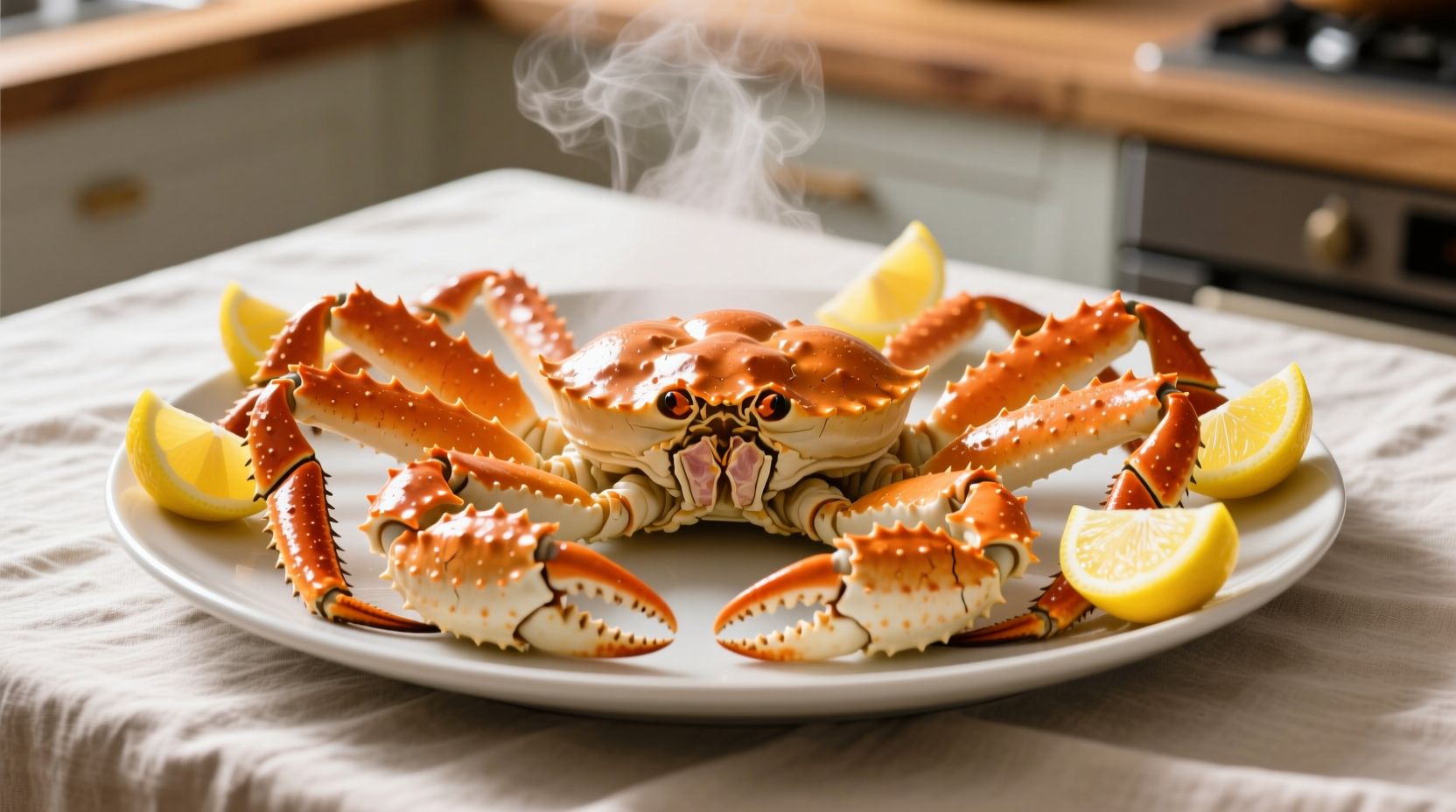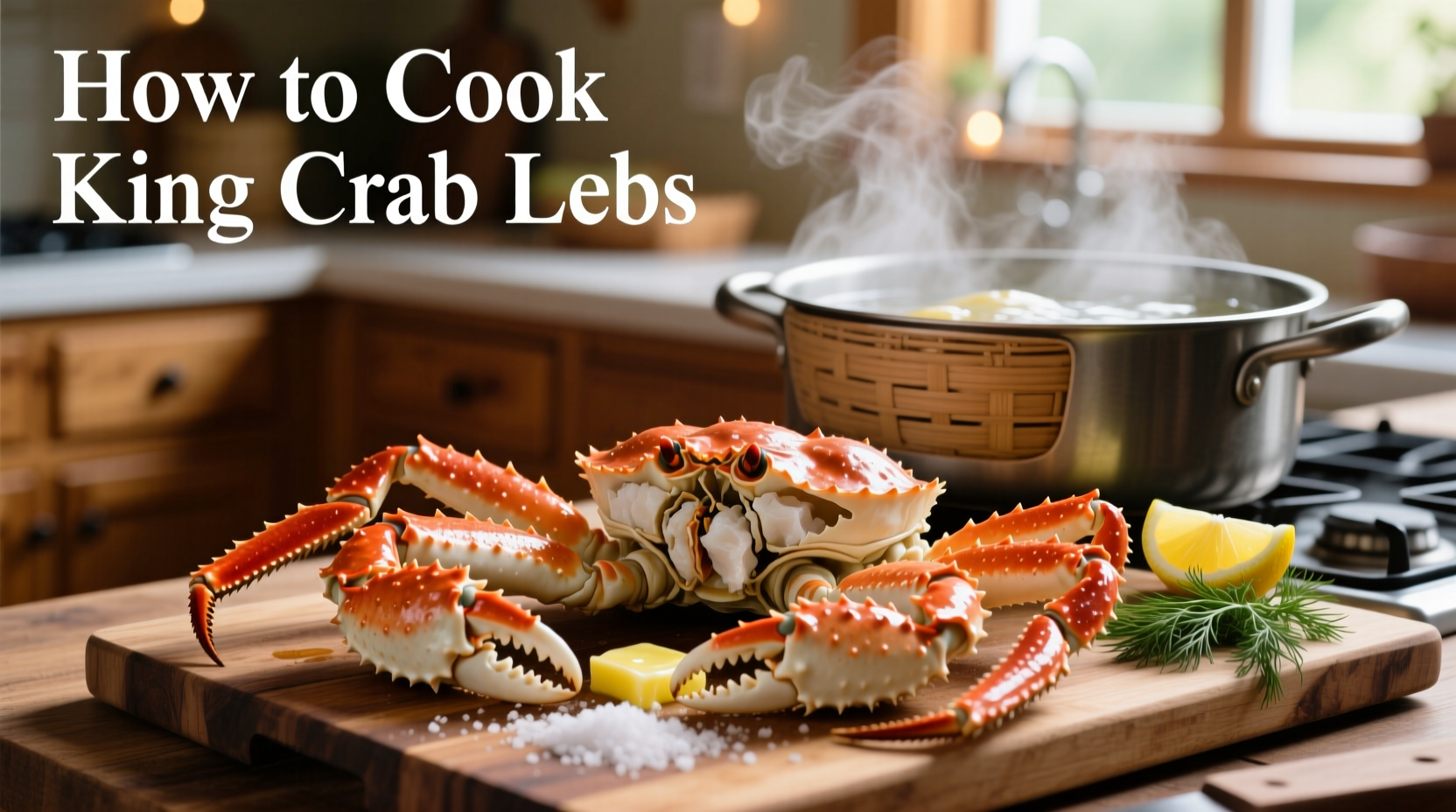Mastering King Crab Leg Preparation: Simple Methods for Perfect Results
King crab legs represent one of nature's most luxurious seafood offerings, prized for their sweet, delicate flavor and tender meat. Whether you've received them as a special gift or splurged on a celebration meal, proper cooking technique makes all the difference between succulent perfection and rubbery disappointment. This guide delivers professional-level methods that work whether you're cooking for two or hosting a seafood feast.
Essential Preparation Before Cooking
Proper preparation ensures optimal cooking results. Most king crab legs sold commercially are pre-cooked and frozen, requiring only reheating. If you've purchased fresh, raw crab (rare outside coastal regions), cooking times increase slightly.
Thawing safely matters: The U.S. Food and Drug Administration recommends thawing frozen seafood in the refrigerator for 24 hours or using the cold water method (submerging in sealed bag in cold water, changing water every 30 minutes). Never thaw at room temperature to prevent bacterial growth (FDA Food Safety Guidelines).
Before cooking, inspect legs for any shell fragments and rinse gently under cold water. Pat dry with paper towels—excess moisture creates steam that can make seasoning slide off during cooking.
Four Reliable Cooking Methods Compared
Each cooking technique offers distinct advantages depending on your equipment and desired outcome. Professional kitchens often prefer steaming for its gentle, even heat distribution.
Steaming: The Gold Standard Method
Steaming preserves the crab's natural moisture while heating evenly. You'll need a large pot with a steamer basket and enough water to create steam without touching the crab.
- Fill pot with 1-2 inches of water and bring to rolling boil
- Add crab legs to steamer basket (arrange in single layer)
- Cover tightly and steam for 5-7 minutes for thawed legs, 10-12 minutes for frozen
- Check doneness: meat should be hot throughout and separate easily from shell
This method aligns with recommendations from the Culinary Institute of America's seafood curriculum, which emphasizes minimal moisture contact to prevent flavor dilution.
Boiling: Quick and Effective
Boiling works well when steaming equipment isn't available, though it can slightly dilute flavor.
- Fill large pot ⅔ full with water
- Add ¼ cup salt per gallon of water (optional lemon slices or Old Bay seasoning)
- Bring to vigorous boil
- Add crab legs and cook 4-5 minutes for thawed, 8-10 minutes for frozen
Immediately remove from heat and drain to prevent overcooking. The salted water enhances flavor while maintaining proper texture.
Baking: Hands-Off Convenience
Baking delivers consistent results with minimal attention required—ideal for entertaining.
- Preheat oven to 350°F (175°C)
- Arrange legs on baking sheet (foil-lined for easy cleanup)
- Brush with melted butter or olive oil
- Bake 6-8 minutes for thawed legs, 12-15 minutes for frozen
This method provides excellent control for larger quantities. The University of California Sea Grant program notes that oven cooking reduces the risk of overcooking compared to boiling when properly timed.
Grilling: For Smoky Flavor Enthusiasts
Grilling adds a subtle smokiness that complements the crab's sweetness.
- Preheat grill to medium-high (375-400°F)
- Split legs lengthwise using kitchen shears
- Brush cut sides with garlic butter
- Grill shell-side down for 4-6 minutes until heated through
Monitor closely to prevent drying. This technique works best with thawed legs and delivers restaurant-quality presentation.
| Cooking Method | Thawed Legs Time | Frozen Legs Time | Internal Temp |
|---|---|---|---|
| Steaming | 5-7 minutes | 10-12 minutes | 145°F (63°C) |
| Boiling | 4-5 minutes | 8-10 minutes | 145°F (63°C) |
| Baking | 6-8 minutes | 12-15 minutes | 145°F (63°C) |
| Grilling | 4-6 minutes | Not recommended | 145°F (63°C) |
Serving Your Perfectly Cooked King Crab
Timing matters when serving—crab legs cool quickly. Have your accompaniments ready before cooking begins. Essential serving elements include:
- Melted butter with lemon wedges (classic pairing)
- Crab crackers and nut picks for easy extraction
- Placemats or newspaper for casual presentation
- Extra napkins (crab eating gets messy!)
For enhanced flavor, brush legs with garlic-herb butter during the last minute of cooking. The USDA FoodData Central shows that king crab provides 16g protein per 3-ounce serving with only 85 calories, making it both delicious and nutritious (USDA National Nutrient Database).

Avoiding Common King Crab Cooking Mistakes
Even experienced cooks make these preventable errors:
- Overcooking: Results in tough, rubbery meat. Set timers and check early.
- Insufficient seasoning: Pre-cooked crab needs flavor enhancement—brush with butter mixtures.
- Crowding the pot: Cook in batches for even heating.
- Skipping the thermometer: Visual cues aren't reliable—use an instant-read thermometer.
Remember that king crab legs continue cooking from residual heat after removal from heat source. Remove them just before reaching ideal doneness.
Storing and Reheating Leftovers Properly
Store unused cooked crab in airtight container in refrigerator for up to 2 days. For longer storage, freeze in vacuum-sealed bags for up to 3 months.
Reheat gently to prevent drying:
- Steaming: 2-3 minutes
- Oven: 350°F for 5 minutes wrapped in foil with butter
- Microwave: Not recommended (creates uneven heating)
Never refreeze previously frozen crab legs after thawing and cooking. The National Seafood Institute emphasizes that proper storage maintains both safety and quality (Seafood Health Facts).











 浙公网安备
33010002000092号
浙公网安备
33010002000092号 浙B2-20120091-4
浙B2-20120091-4